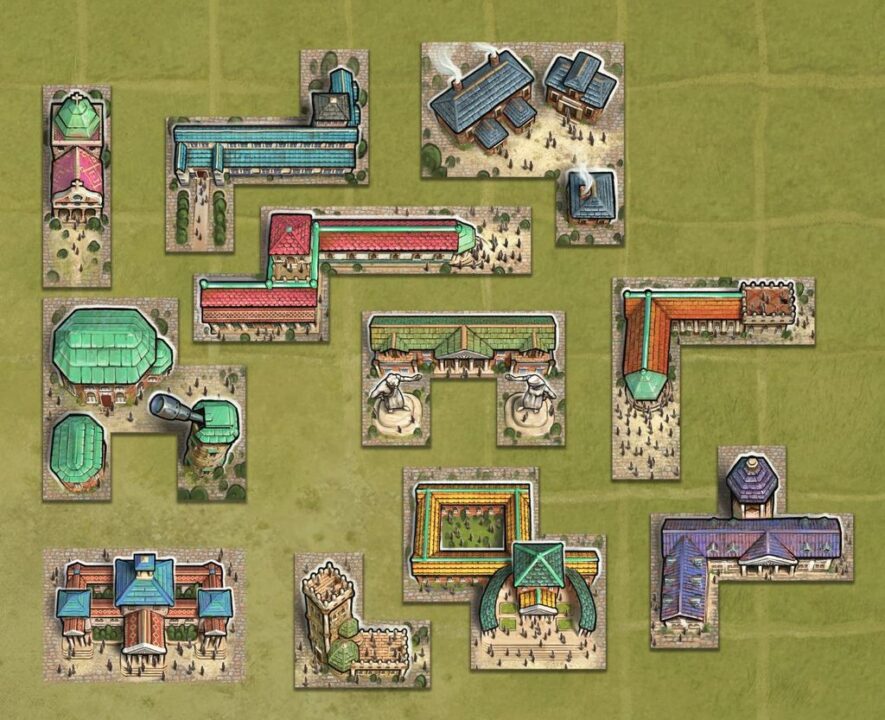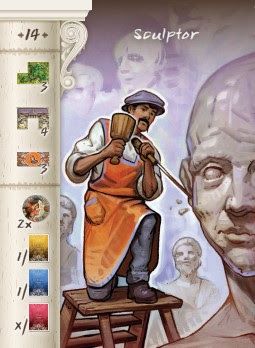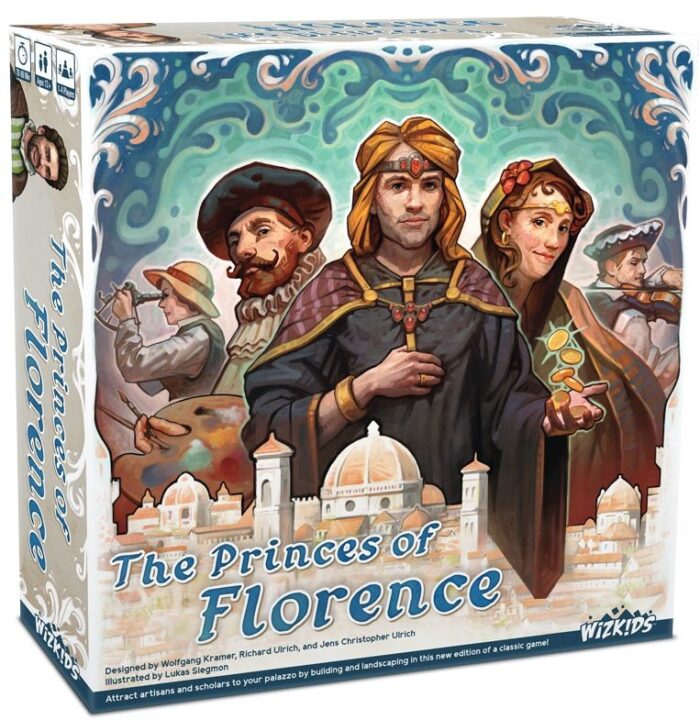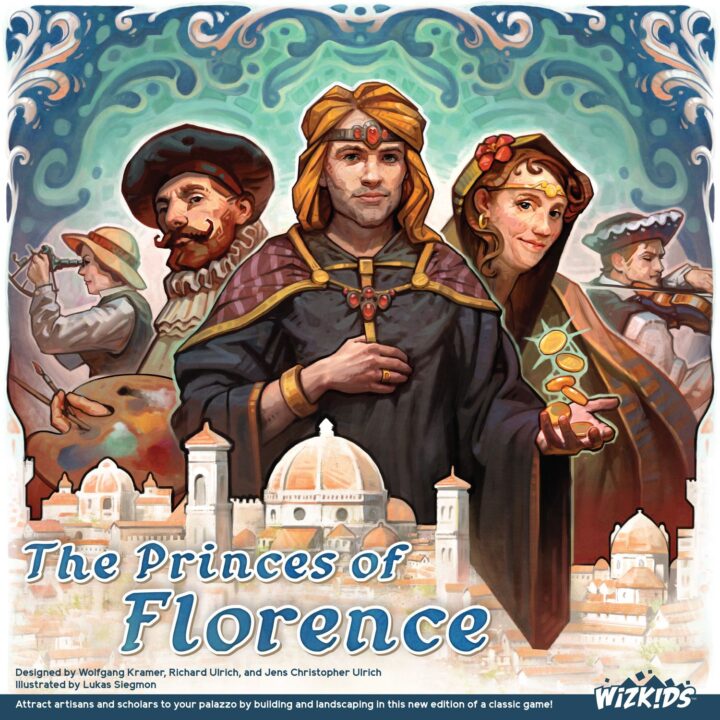Overview
Welcome to our review of The Princes of Florence, an immersive and strategic board game set in Renaissance Italy. In this review, we will dive into the gameplay mechanics, artwork and components, strategic decision-making, and replayability of this highly acclaimed game.
The Princes of Florence offers players an opportunity to step into the roles of influential patrons as they compete to establish prestigious workshops, commission exquisite artworks, and attract the attention of the most esteemed figures of the era. With its emphasis on resource management, adaptation, planning, and balancing risk and reward, this game promises an engaging and intellectually stimulating experience for board game enthusiasts.
Gameplay Mechanics
The game’s gameplay mechanics provide a solid foundation for immersive gameplay, with a wide array of options to choose from. Building workshops and commissioning artworks are key actions that require careful consideration, as each decision can significantly impact a player’s chances for success. Additionally, managing patronage and prestige adds another layer of depth to the gameplay.
How It Plays
Setting Up
To set up The Princes of Florence, each player is given a player board and an initial set of resources and money. The deck of cards is shuffled and placed within reach, while the building and attraction tokens are placed in separate piles. The artworks are also laid out, and the number of players determines the quantity of each item used in the game. Once set up, players are ready to embark on their journey to become the most prestigious patron in Florence.
Gameplay
The game is played over seven rounds, with each round divided into several phases. In each round, players take turns performing actions, such as building workshops, commissioning artworks, or improving their grounds. The available actions may vary depending on the buildings, artists, and opportunities presented during the game. Throughout the game, players must carefully manage their resources and make strategic choices to outmaneuver their opponents and gain the favor of influential patrons.
Winning the Game
The game concludes after the seventh round, and the player with the highest total of victory points becomes the winner. Victory points can be earned through various means, such as collecting completed artworks, having a diverse collection of buildings, attracting powerful patrons, and meeting certain objectives. The strategic decisions made throughout the game will ultimately determine who achieves mastery in the wondrous art world of Renaissance Florence.
The Princes of Florence is a game that offers a dynamic and engaging gameplay experience. By carefully setting up the game, maneuvering through the different phases of each round, and strategizing to accumulate victory points, players must showcase their skills as patrons.
Want to know more? Read our extensive strategy guide for The Princes of Florence.
The gameplay mechanics of The Princes of Florence are both engaging and strategic, allowing players to immerse themselves in the world of Renaissance Italy. From the start of the game, each player must carefully manage their resources and make strategic decisions to establish prestigious workshops and attract the attention of influential patrons.
An Array of Options
One standout aspect of the gameplay mechanics is the wide array of options available to players. From choosing which buildings to construct, to deciding which artworks to commission, every decision has consequences that can impact the outcome of the game.
Building Workshop and Attraction Tokens
One such example is the mechanic of building workshops and attraction tokens. Players must strategically select the combination of buildings that will best suit their artistic vision. Each workshop provides different advantages and limitations, leading players to carefully weigh their options before making their choice.
Commissioning Artworks
In addition to constructing workshops, players must also determine when and how to commission artworks. By selecting the right combination of artists and subjects, players can maximize their rewards and earn valuable victory points. However, timing is crucial, as the availability of certain artists and subjects can change rapidly.
Patronage and Prestige
Another key aspect of the gameplay mechanics is managing patronage and prestige. Players must carefully navigate the social landscape of Florence by attracting influential patrons. By completing specific objectives and showcasing their artistic prowess, players can increase their prestige and gain the favor of these influential figures.
With its intricate gameplay mechanics, The Princes of Florence offers a dynamic and immersive gaming experience that will have players strategizing every move. Now that we’ve delved into the engaging mechanics of the game, let’s move on to exploring the captivating artwork and components that bring Renaissance Italy to life.

A Visual Feast
The artwork and components of The Princes of Florence truly bring the game to life, immersing players in the vibrant and elegant world of Renaissance Italy. From the beautifully illustrated cards to the intricately designed player boards, every element is crafted with meticulous attention to detail.
Visually Stunning Artwork
The game features visually stunning artwork that captures the essence of the Renaissance period. The cards, depicting famous artworks and iconic landmarks, are filled with vibrant colors and intricate details that transport players to the culturally rich streets of Florence.
High-Quality Components
In addition to the breathtaking artwork, the components of the game are of the highest quality. The thick cardboard tiles and sturdy wooden tokens ensure durability and enhance the tactile experience of playing the game. The player boards are designed with elegance and functionality, allowing players to easily organize their resources and track their progress.
Attention to Detail
One aspect that stands out is the attention to detail in the artwork and components. From the intricate illustrations on the building tiles to the finely crafted resources, every element is thoughtfully designed to enhance the overall gaming experience. The attention to detail is evident in the small touches, such as the unique shape of the attraction tokens, adding an extra layer of aesthetic appeal.
The combination of visually stunning artwork and high-quality components elevates the gameplay experience of The Princes of Florence. Now that we’ve explored the captivating artwork and components, let’s move on to discussing the strategic depth and decision-making involved in the game.

Mastering the Renaissance
The Princes of Florence is a game that requires careful strategy and thoughtful decision-making, as players strive to become the most prestigious patrons in Renaissance Italy. The strategic depth of the game ensures that no two playthroughs are alike and keeps players engaged from start to finish.
Resource Management
One key aspect of the strategy in The Princes of Florence is resource management. Players must effectively manage their limited resources, such as money and manpower, to build workshops, commission artworks, and attract influential patrons. Each decision regarding resource allocation can have a profound impact on a player’s success in the game.
Adapting to Opportunities and Constraints
An important strategic consideration in the game is the ability to adapt to the ever-changing landscape of opportunities and constraints. Players must be flexible and recognize when and how to adjust their plans based on the actions of their opponents, the availability of buildings and artists, and the demands of influential patrons.
Planning and Timing
Effective planning and timing are crucial to achieving success in The Princes of Florence. Players must carefully consider their long-term goals and develop a viable strategy that will allow them to maximize their prestige and earn valuable victory points. Timing actions at the right moment can often mean the difference between success and failure.
Balancing Risk and Reward
The game presents players with choices that involve balancing risk and reward. Players must decide whether to take calculated risks to pursue potentially lucrative opportunities or opt for safer, but potentially less rewarding actions. Finding the right balance between caution and daring can greatly influence a player’s chances of victory.
With its emphasis on strategic decision-making, The Princes of Florence offers a challenging and intellectually stimulating gameplay experience. Now that we’ve explored the strategic elements of the game, let’s dive into the replayability factor, which keeps players coming back for more.

Endless Possibilities
The Princes of Florence offers a high level of replayability, ensuring that players can enjoy a fresh and engaging experience with each playthrough. The game’s replay value stems from its dynamic gameplay, diverse strategies, and variable setup options.
Dynamic Gameplay
The game’s dynamic gameplay is a key factor in its replayability. Each game unfolds differently as players make strategic choices and navigate the competitive landscape of Renaissance Italy. The ever-changing availability of buildings, artists, and patrons ensures that no two games are exactly the same.
Diverse Strategies
The Princes of Florence encourages players to explore a wide range of strategic approaches. Depending on their goals and the actions of their opponents, players can adopt different gameplay strategies to achieve victory. This diversity of strategies keeps the game fresh and motivates players to continue exploring new avenues.
Variable Setup Options
Another aspect that contributes to the game’s replayability is the variable setup options. The Princes of Florence provides multiple ways to set up the game, such as varying the number of players and using different buildings or artworks each time. This variability adds a layer of unpredictability and ensures that each playthrough offers unique challenges and opportunities.
Expansion Content
Furthermore, the game offers expansion content that can further enhance its replayability. Additional buildings, artworks, and cards can be added to the base game, providing new elements and strategies for players to explore. These expansions breathe new life into the game and offer experienced players a fresh experience.
The Princes of Florence truly excels in terms of replayability, offering endless possibilities and exciting gameplay with each session. Whether you’re a fan of strategic decision-making or appreciate the dynamic nature of the game, The Princes of Florence is a must-have for board game enthusiasts looking for a game that will keep them entertained for many playthroughs. I highly recommend this immersive and engaging gaming experience.

Conclusion
In conclusion, The Princes of Florence is a captivating and intellectually stimulating board game that brings the world of Renaissance Italy to life. With its engaging gameplay mechanics, visually stunning artwork and high-quality components, strategic decision-making, and high replayability, this game is a must-have for any board game enthusiast. Whether you are a fan of resource management, adaptive strategies, or the excitement of balancing risk and reward, The Princes of Florence delivers an immersive and rewarding gaming experience. Don your patronage hat and step into the illustrious world of Renaissance Florence in this remarkable game.


